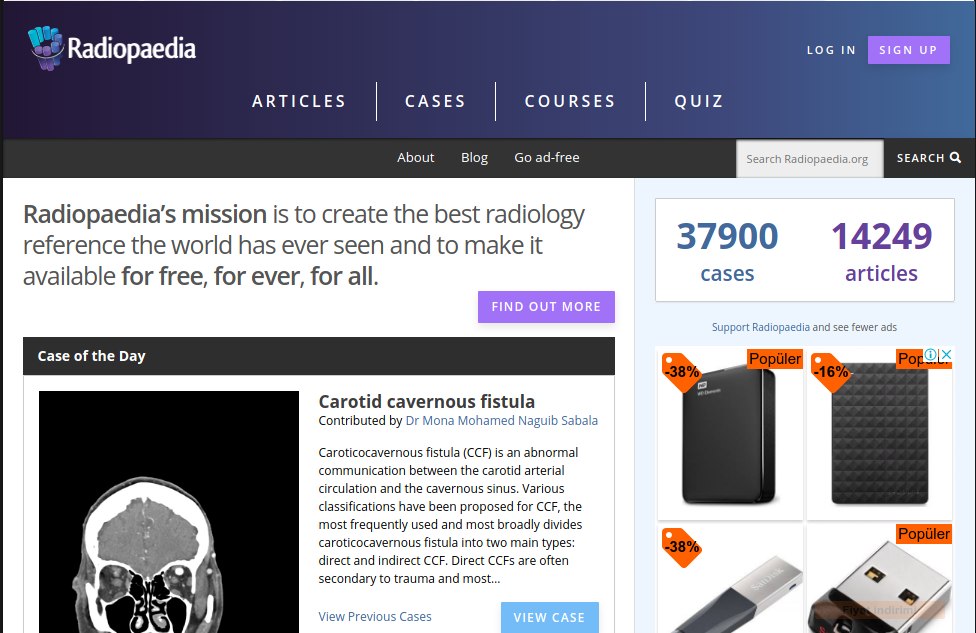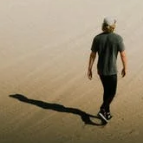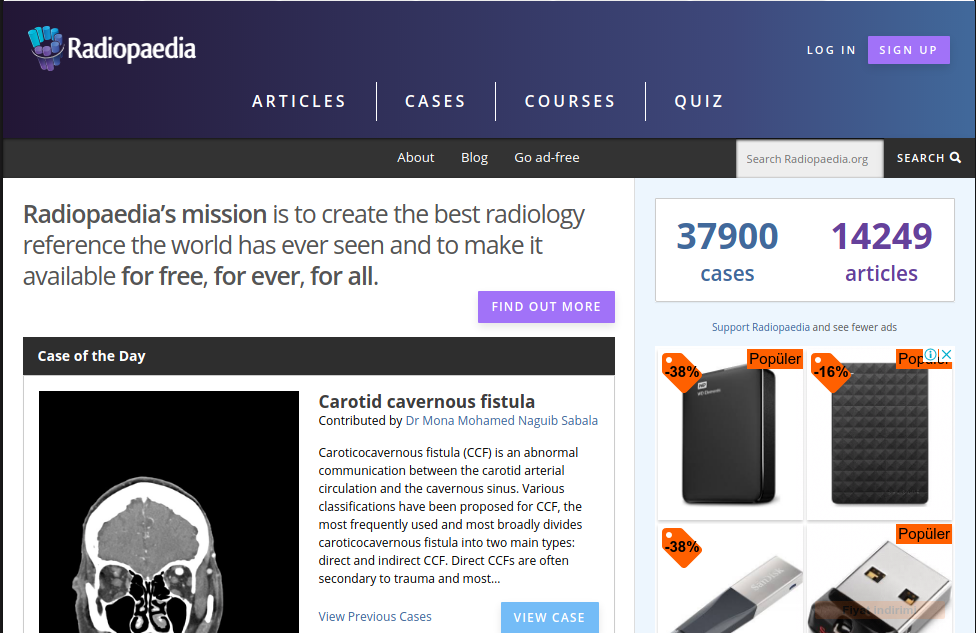Radiopaedia.org : The top Ranked Website in Every Radiologist`s Bookmark
Radiopaedia.org is a rapidly growing, open-edit radiology resource, compiled by radiologists and other health professionals from across the globe.
Radiopaedia is a radiology educational web resource containing reference articles, radiology images, and patient cases. It also contains a radiology encyclopedia. It is currently the largest freely available radiology related resource in the world with more than 35,000 patient cases and over 13,000 collaborative articles on radiology-related topics. The open edit nature of articles allows radiologists, radiology residents/registrars, radiographers, sonographers and other healthcare professionals intereted in medical imaging to modify and refine most content through time.

Mission
Radiopaedia’s mission is to create the best radiology reference the world has ever seen and to make it available for free, for ever, for all. Its intention is to benefit the radiology community and wider society and it relies on benevolent collaborations from radiologists and others with an interest in medical imaging.
How did it start?
It was founded by the Australian neuroradiologist Associate Professor Frank Gaillard in December 2005. It was initially Australian-led but now has a worldwide collaboration.[ Its article content is currently limited to English
Using Radiopaedia.
Registered users of the site are allowed to freely add and edit the majority of the content. This allows content to be progressively upgraded over years and for radiologists and society, in general, to continuously refine article content through time. The site also allows registered users to maintain their own personal case library of teaching cases. Rather than individually publishing articles, users are encouraged to integrate content with links to cases and journal articles and collaboratively refine content. In an attempt to reduce vandalism and to peer-review content, an editorial board moderates changes to ensure that the presented material is as accurate and relevant as possible. As with similar open edit sites, unreliability of content has been a concern; however, despite its open edit nature, it is ranked relatively highv among user reviews
As a member of Radiopaedia, you can create your own interesting case library as well as help improve articles on the site. You can use the thousands of cases to help teach your peers and promote radiology and medicine more broadly.
You can be an individual contributor or you can have your institution verified and join with your colleagues to combine your case libraries together.
Radiopaedia.org comprises two fundamental content types (articles and cases) and playlists (ordered collections of cases).
Gold member = No advertisement
If you want to browse the website without ads, you may consider registering as a gold member then you can get ads-free edition of Radiopaedia.org.
If you are a medical student planning to proceed into radiology, surgery, or other specialties that require daily use of radiology resources like reading CT scans, MRI and such, get yourself familiar with Radiopaedia.org.


